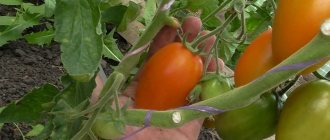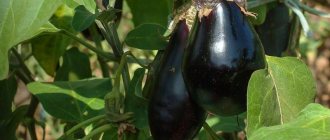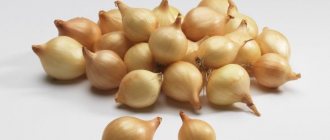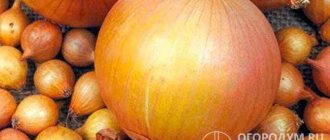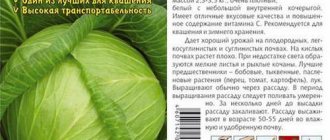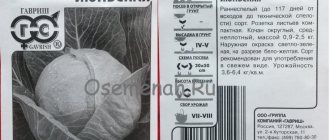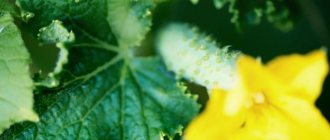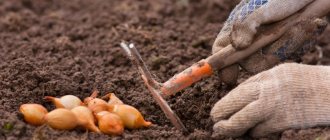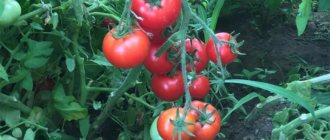Description of tomatoes Batyanya
The Batyanya tomato, bred, is intended for cultivation in unfavorable climatic conditions and belongs to varieties that are highly resistant to high humidity, sudden changes in temperature and late blight. The specialization of this company is the selection of varieties that grow well and bear fruit well in the harsh climate of Siberia. Tomato Batyanya was created in 2007. In 2008, it was included in the state register of selection achievements. The originators are V. N. Dederko and O. V. Postnikova. The variety is approved for cultivation in all regions of Russia. Scope of application: personal plots and garden plots.
The tomato variety Batyanya belongs to the category of indeterminate plants with unlimited growth. According to photos and reviews from those who planted the Batyan tomato, when grown in greenhouses or greenhouses, its height can reach 2.2 m. When growing, tall bushes must be tied up and shaped.
The early ripening period allows you to collect the first fruits 95-105 days after the appearance of the first shoots. According to its intended purpose, the Batyanya tomato belongs to the salad category. An important feature of growing the Batyanya tomato is regular pinching, since the bushes are characterized by increased shoot formation.
The stems of the Batyan tomato are strong and the leaves are large, so they are removed during the period of formation and ripening of the fruit. This ensures faster fruit ripening and improves air circulation. The color of the foliage is dominated by dark green shades.
A distinctive feature of the Batyanya tomato variety, a description and reviews of which are presented below, is the presence of simple inflorescences.
Ripe Batyani tomatoes are heart-shaped, slightly ribbed and slightly elongated with a so-called spout. Density is average. The fruit is quite fleshy. Unripe fruits are predominantly shades of green, with a dark green spot near the stalk. Over time, this spot acquires a yellowish tint.
Judging by the description compiled by the originators, the color of ripe fruits of tomatoes of the Batyanya variety is bright pink or crimson. The number of seed chambers is 4-5.
The weight of ripe fruits of the Batyan tomato is about 200-300 g. In any case, such indicators are stated in the state register. However, according to numerous photos and reviews from those summer residents who planted them, the fruits of the Batyan tomato can reach 500-700 g.
Main characteristics of the variety
Ripe fruits are heart-shaped, with a small but pointed tip. There are practically no deviations in ripe fruits; they are all even, with a smooth, even glossy skin. At first, ripe tomatoes have a green color, which then changes to pink, and fully ripened Batyani fruits have a rich crimson color.
The pulp is compacted, fleshy, sugary, quite sweet, practically without sourness. The pulp does not lose its pleasant taste even in fruits that ripen at the end of the season. The pulp may contain 3-4 seed chambers with a small amount of seed material.
The weight of ripe Batyanya tomatoes is about 300 g, those fruits that grow in the lower part of the bushes can weigh more - up to 500-650 g, at the top the tomatoes grow much less - about 150-200 g.
They are not prone to cracking under normal growing conditions. But in rainy seasons or when watered too much, the tomatoes will crack.
Tomato "Batyanya" Siberian variety - video
Ripe fruits are universally used; they are eaten fresh, added to salads and other snacks. These fruits are also used in canning - for making juice, tomato paste, ketchup, sauces and lecho.
The harvested crop can withstand transportation well to any distance, but is not stored for a long time.
Therefore, it is necessary to process the fruits immediately as they are collected.
Characteristics of tomato Batyanya
The Batyanya tomato variety, the photo and description of which are presented above, is intended primarily for cultivation in the climatic zone of Siberia, where it was bred. The breeders working on developing the variety set a goal: to solve all the problems that arise when growing tomatoes in difficult conditions. And the task was successfully solved - according to reviews from gardeners, the characteristics and productivity of the Batyanya tomato variety are excellent, which is confirmed by photos of ripe tomatoes.
Despite the fact that this tomato variety is recommended for cultivation in areas with an unstable climate, it is grown in almost all regions.
Interesting fact!
This original name was given to the variety mainly because of the fruits. They are quite heavy, weighty, juicy and strong.
Tomato yield Batyanya
Judging by the characteristics of the variety, the yield of Batyanya tomatoes is 2 kg per 1 m². This is official state register data. However, according to reviews from gardeners, the yield can be up to 5-6 kg per bush. It follows that from 1 m² you can harvest from 16.5 to 18 kg of tomatoes with a planting pattern of 3-4 bushes/m².
To a greater extent, the yield of a variety is influenced by the timing of planting, as well as compliance with the rules of planting and care. Regular removal of stepsons and pinching the bush at a height of 1.8-2 m allows you to increase the yield by 15-20%.
Advantages and disadvantages of Batyanya tomato
When choosing varieties for planting on their plots, any summer resident tries to assess in advance the advantages and disadvantages of a particular variety. Batyanya tomatoes are no exception, with photos and reviews of which you can find in this article.
Tomato has the following positive qualities:
- large fruit size;
- high productivity;
- resistance to late blight infection;
- universal use of fruits;
- ability to survive in unfavorable climatic conditions;
Reviews from summer residents and gardeners
It is very important to choose the right seeds. Further cultivation will depend on their quality. You should buy seeds in specialized stores from a trusted manufacturer.
Negative
Marina, 46 years old, Kirov: “I didn’t like the Batyanya variety at all. After planting the seeds, it took a long time for the seedlings to appear, and I still didn’t see half of them. The stems of the seedlings were thin and weak. I didn’t like the taste of tomatoes either.”
Neutral
Nadezhda, 59 years old, Tolyatti: “The Batyanya variety requires constant attention. It is imperative to periodically apply fertilizer, otherwise the plant begins to weaken. Without constant tying of the stem, as it grows, the branches break and the yield decreases. Therefore, this variety is not suitable for those who have little time and opportunity to care for tomatoes.”
Elena, 58 years old, Tambov: “I planted the Batyanya variety for the first time last year. The fruits ripened early, but inside were loose and tasteless. They take up a lot of space in the beds, but the result is not impressive.”
Growing rules
Batyanya tomato seeds should be planted to obtain seedlings 2 months before the approximate date of transplantation into a greenhouse or open beds. It is recommended to choose loose soil enriched with nutrients. The soil acidity level should be low.
The seeds are planted in the ground to a depth of 1.5-2 cm, sprinkled with soil and watered with heated water. The top of the boxes with seedlings should be covered with film or glass to create a greenhouse effect. The temperature for seedling germination should be at least +24˚+26˚ C.
Batyanya tomato seeds (reviews of which are only positive) begin to germinate in 3-4 days. After germination, the protective covering must be removed and the plants transferred to light. The air temperature should be 6-7⁰C lower than the original one. This will help strengthen the root system and prevent the seedlings from stretching too tall.
As soon as the first 2 leaves appear, the seedlings can be planted. Before transferring to the ground, plants are fed with whey or wood ash.
After 55-60 days, the young bushes can be transplanted into the beds. Although the Batyanya tomato is a frost-resistant variety, it is better to postpone replanting until night frosts do not threaten the plants. It is recommended to plant no more than 3-4 plants per 1 m². The bushes should be at a distance of 50-55 cm from each other. The recommended width between beds is 35-50 cm.
Attention!
The best predecessors for tomatoes are cabbage, carrots, dill, zucchini, cucumbers and legumes.
This variety will not grow in heavy and dense soil. Such soil prevents the full formation of the root system, and the yield decreases. Therefore, beds for tomatoes are prepared in advance. The soil must be well fertilized and thoroughly dug.
Further care for Batyan tomatoes includes:
- Tie plants to vertical supports. This needs to be done as soon as the growth of the stems reaches 30-35 cm. Near each hole you need to stick a stake into the ground and tie the stem to it. If this is not done, the plant may break under the weight of the fruit.
- To obtain a high yield, the bushes are formed into 2 stems. Low-lying foliage is cut off to the first brush. It is constantly necessary to carry out stepsoning. Otherwise, all the vitality of the plant will be spent on the formation of green mass, and not on the formation of fruits.
Further care of seedlings
The first sprouts appear 5-7 days after sowing the seed. The film should be removed and the containers should be moved to a bright place. The room temperature is not reduced during the entire time of growing seedlings.
Water the plants as the top layer of soil dries out.
The water should be filtered and at room temperature. If you water seedlings with cold water, they may develop blackleg.
If the young plants have grown too densely, then after at least a couple of true leaves appear on them, you need to pick. The sprouts are carefully picked up with a thin sliver and transplanted into separate cups.
Photo of tomato seeds Batyanya
A couple of weeks after picking, Batyan tomato seedlings can be fed with any fertilizer containing nitrogen. When fertilizing tomato seedlings, you must strictly adhere to the dosage specified in the instructions.
The second feeding is carried out a couple of weeks after the first, but no later than 10-12 days before transplanting the grown seedlings to a permanent place.
How to form tomatoes Batyanya - video
On a note!
12-14 days before transplanting Batyanya tomato seedlings into open ground or a greenhouse, it must be hardened off. To do this, containers with seedlings are taken outside for a short time at first, but gradually the time spent by young tomatoes on the street is increased so that they get used to future growing conditions in advance.
The distance between adjacent plants in rows should be 0.5 m, and the row spacing should be at least 0.4 m. Experienced vegetable growers recommend planting no more than 3 bushes of this variety per square area.
The soil on the site should be loose and fertile. To do this, in the fall, organic matter is added to it for digging, and in the spring, mineral fertilizers and wood ash are added to the planting holes.
Diseases and pests
The tomato variety Batyanya is distinguished by its immunity to late blight infection. However, other viral diseases can cause significant harm to plants. However, thanks to the early ripening, the bushes are practically not affected by many diseases that harm varieties with medium and late ripening.
Sometimes you can notice the appearance of yellow spots on the leaves. This indicates that the plant needs zinc, potassium, nitrogen and iron. You can solve the problem of restoring the balance of vitamins and minerals by using superphosphate.
Yellow spots may also indicate a lack of light, nutrients, or the effects of lower air temperatures.
This tomato rarely suffers from insect pests.
You can learn more about the advantages of the Batyanya tomato variety from the video review
Advantages and disadvantages
The Batyanya variety has many advantages:
- Fast ripening of fruits.
- Excellent taste of ripe tomatoes.
- Large fruits that do not crack.
- High yield.
- Good keeping quality.
- Resistance to transportation.
- Easy to care for, withstands slight drops in temperature.
- Resistance to late blight and other nightshade diseases.
No serious shortcomings were identified. These include the need for pinching and tying up the bush and brushes so that they do not break under the weight of large tomatoes.
Reviews about tomato Batyanya
Alexandra, Krasnodar region. Batyanya chose the tomato variety based on the description and reviews on the Internet. Very tasty and big size! In April, I plant directly in the garden bed and add fertilizers with potassium. There have been no problems with it; I am already harvesting my first harvest in June. I'm rolling up the juice for the winter. Children also really like it.
Ksenia, Moscow region. We grow Batyanya tomatoes both in the garden and in the greenhouse. I liked that there are no white veins in the tomatoes, and the flesh is very juicy and sweet. I haven’t tried canning – the fruit is very large in size, but we enjoy eating it in salads. I recommend this variety to everyone, you definitely won’t regret it.
Harvesting and purpose
It is recommended to remove the fruits from the bush when they are unripe. The harvested crop is laid out on a flat, clean surface in one layer. Air must circulate in the room. The room temperature should be within +10...+14 degrees, air humidity - 83%. The purpose of the fruit is universal. They can be salted, pickled, made into vegetable preparations, juices, pastes, adjika. Tomatoes perfectly complement summer salads, giving them a pleasant sourness.
How to care for tomatoes
The productivity of tomatoes depends on the organization of their care. In greenhouse conditions, before fruiting begins, tomatoes are kept at a temperature of +19...+22 °C. When entering the flowering phase, you need to reduce the air humidity to 50%.
The drier it is, the easier it will be to separate the pollen from the pistils. For pollination to be successful, aeration alone is not enough. It is necessary to shake the upper flower beds during the daytime so that the pollen settles on the lower ones, or transfer it with cotton swabs.
Otherwise, caring for tomatoes in a greenhouse and open ground is practically the same.
Feeding
During the season, 3 feedings are carried out:
- 10 days after planting the seedlings in the ground - liquid mullein + dusting the holes with ash;
- 10–14 days after the first feeding - 500 g of bird droppings + 40 g of superphosphate per 10 liters of water;
- during the formation of the ovary - 10 g of yeast per 10 liters of water.
Watering
Water is applied directly to the root. If liquid gets on greens, it can lead to a fungal infection. Water temperature for irrigation is +18…+20 °C. Use only settled soft water.
In open and closed ground, it is best to use a drip or ditch irrigation system. This will allow you to economically distribute water and maintain optimal soil moisture, eliminating waterlogging.
Stepsoning
Small lateral shoots do not bear fruit, but take away nutrients and water, which prevents the normal development of fruits.
Important! Sprouts 3–5 cm long must be removed. If they are larger, they should not be cut off - there is a high risk of infection.
In addition to the shoots, excess brushes are removed. In greenhouse conditions, pinch out leaves and brushes every 7–10 days.
In the open ground, they focus not only on these dates, but also on weather conditions. The procedure is not carried out immediately after watering or rain; you need to wait until the soil dries.
Scheme of stepsoning in 1 shoot:
- pinching the main stem after the formation of 5–6 clusters;
- on the second shoot, the top is pinched when 1 cluster is formed;
- after setting the main number of fruits - 6–10 clusters, the remaining inflorescences are removed;
- removal of old leaves under the ovary and one above it is carried out as they ripen;
- each shoot is securely fixed to the support.
Pinching small shoots is done with clean hands - this is less damaging to the plants than pruning with a knife.
Tying and shaping the bush
Tying is carried out immediately after transplantation to a permanent place. As they grow, all shoots are fixed to the support.
Find out how to properly tie tomatoes.
There are several options for tying:
- Stakes - plants are fixed to a wooden support, which exceeds their expected height by 20–30 cm. Suitable for bushes formed into 1 stem.
- Horizontal and vertical trellises - at the beginning, at the end and in the middle of the beds, supports are installed on which the wire is attached horizontally or vertically. As the plants grow, they are fixed at different heights.
- Mesh - a mesh is installed between the beds. The design is similar to the previous one, but allows you to fix 1 plant on each side, which will save time on organizing individual supports.
The formation of a bush is possible in 1, 2 or 3 stems.
In the first case, all side shoots and brushes are removed with a knife, leaving 6–8 ovaries on the main shoot. In the second case, one strong side shoot is left, formed under the first brush. In the third case, a shoot formed under the 2nd brush is left on the bush. Important! All work is carried out with clean tools disinfected in alcohol. The main thing is not to let the juice get on your hands, and treat the tool after each plant. The presence of fungal spores in the soil or on plants is not immediately noticeable, but they are transmitted with juice from a sick tomato to a healthy one.
Loosening the soil
After each watering, application of liquid fertilizers and rain, the soil is loosened and then mulched. The optimal aeration depth is 5 cm near plants, 10 cm between rows. Simultaneously with loosening, weeds are removed.
